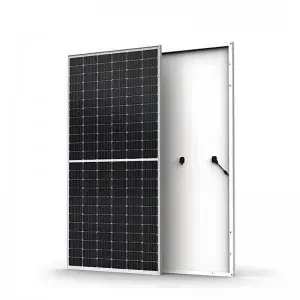We’ve all heard about the benefits of solar energy. No matter where in the world you live, you’ve probably seen a rooftop adorned with solar panels. But have you ever wondered what these panels are made of? In this blog post, we’ll take a closer look at the materials used in solar panels and the science behind how they convert sunlight into energy.
Most solar panels are made of silicon, a hard and brittle crystalline element that is abundant in the Earth’s crust. Silicon is the second most abundant element in the Earth’s crust, accounting for about 27% of the Earth’s crustal composition. It is a semiconducting material, which means it can conduct electricity under certain conditions. When silicon is exposed to light, it releases electrons, which can be used as electricity.
Silicon used in solar panels comes in two main forms: monocrystalline and polycrystalline. Monocrystalline silicon is made from single crystal silicon, which is more efficient than polycrystalline silicon, which is made from polycrystalline silicon. Monocrystalline silicon is also more expensive to produce, but it is the preferred choice for high-end solar panels.
The silicon material is sandwiched between two layers of conductive material. The top layer is usually made of a thin layer of silica, which acts as an anti-reflective coating to ensure that as much sunlight as possible is absorbed by the solar panel. The bottom layer is made of a metal such as aluminum, which acts as a conductor and helps carry electricity.
Besides silicon, other materials used in solar panels include:
1. Cadmium Telluride – Thin film solar panels are made from cadmium telluride, a compound of cadmium and tellurium. Cadmium telluride solar panels are generally less expensive to produce than silicon-based solar panels.
2. Copper Indium Gallium Selenide – Another type of thin-film solar panel, copper indium gallium selenide (CIGS) is made from a mixture of copper, indium, gallium, and selenide.
3. Amorphous Silicon – Amorphous silicon is a non-crystalline form of silicon used in some solar panels. It is less efficient than crystalline silicon, but can be produced in thin films, making it ideal for flexible, lightweight solar panels.
In summary, solar panels are made from a variety of materials, but their main component is silicon. When exposed to sunlight, silicon releases electrons that can be converted into electricity. The type of solar panel you choose depends largely on factors such as cost, efficiency, and durability. However, no matter which type of solar panel you end up choosing, you can feel good knowing that you are harnessing the sun’s energy to produce clean energy that helps reduce your carbon footprint.
Post time: May-11-2023
